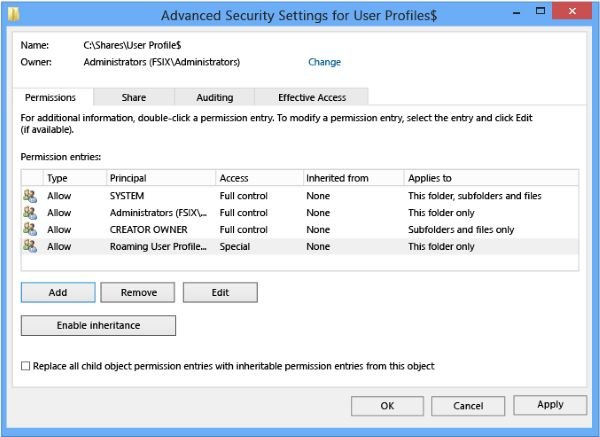Roaming user profiles are incompatible
When you try to deploy Windows 10 in an environment that uses roaming profiles in Windows 7, you experience the following behavior: After you use a user account that has an existing Windows 7 or Windows 8.1 profile to log on to a Windows 10-based computer for the first time, the components from Windows 10 read and change the profile state. Also, certain Windows 7, Windows 8.1 or Windows 10 features may not work as expected because the expected profile state isn’t present. For example, the Start menu does not start. Cortana, Taskbar is unresponsive. And taskbar icons are missing. Additionally, when you try to use the same user account to log on to a Windows 7-based computer, the user profile modification that was performed in Windows 10 may not work as expected in Windows 7 or Windows 8.1.
Cause of roaming user profiles versioning incompatibility issues in Windows 10
By default, Windows 10 clients use a “v5” profile folder extension. On earlier versions of Windows, the default version was “v2“. This issue is caused by after you use a user account that has an existing Windows 7, Windows 8, or Windows 8.1 profile to log on to a Windows 10-based computer for the first time, a “v5” or “v6” version of the profile is created. To resolve this issue, Microsoft suggests you make sure that you do not disable Profile Versioning. By default, profile versioning is enabled in Windows 10, Windows Server 2016 and later versions of Windows. This behavior is by design and was implemented because of the incompatibilities between profile versions. If user accounts that use roaming profiles log on to both Windows 10 and earlier versions of Windows, there must be a profile for each version type. You can find more information about Mandatory Profiles. here. I hope you find this guide useful enough!

